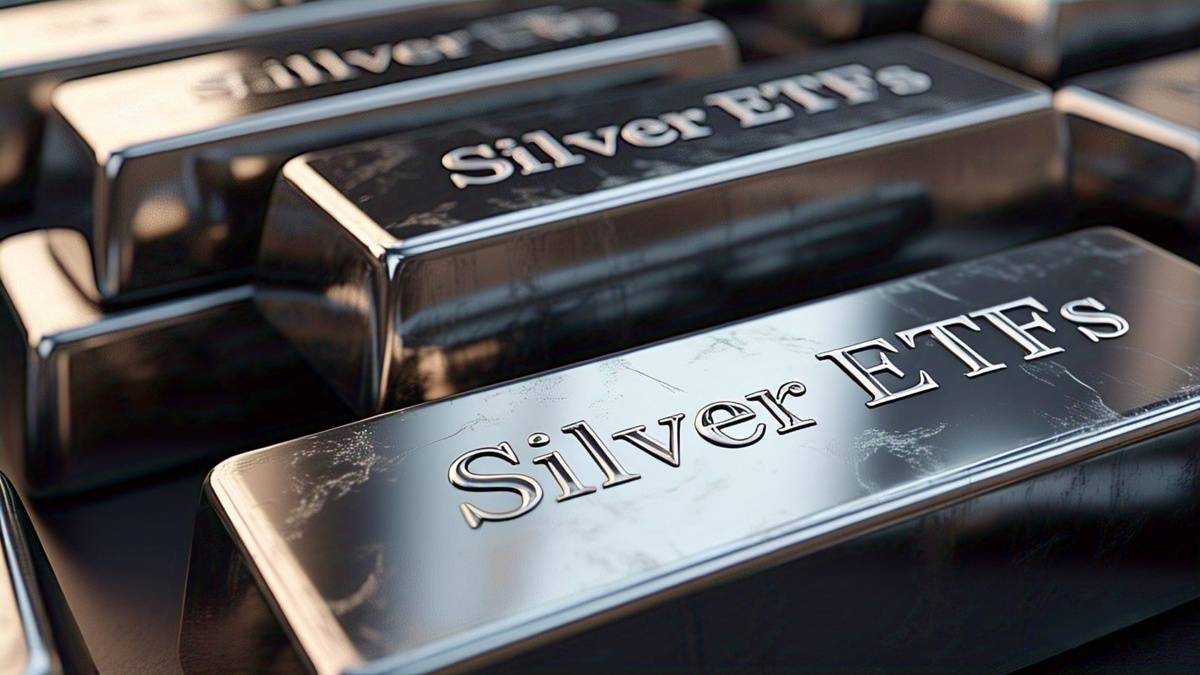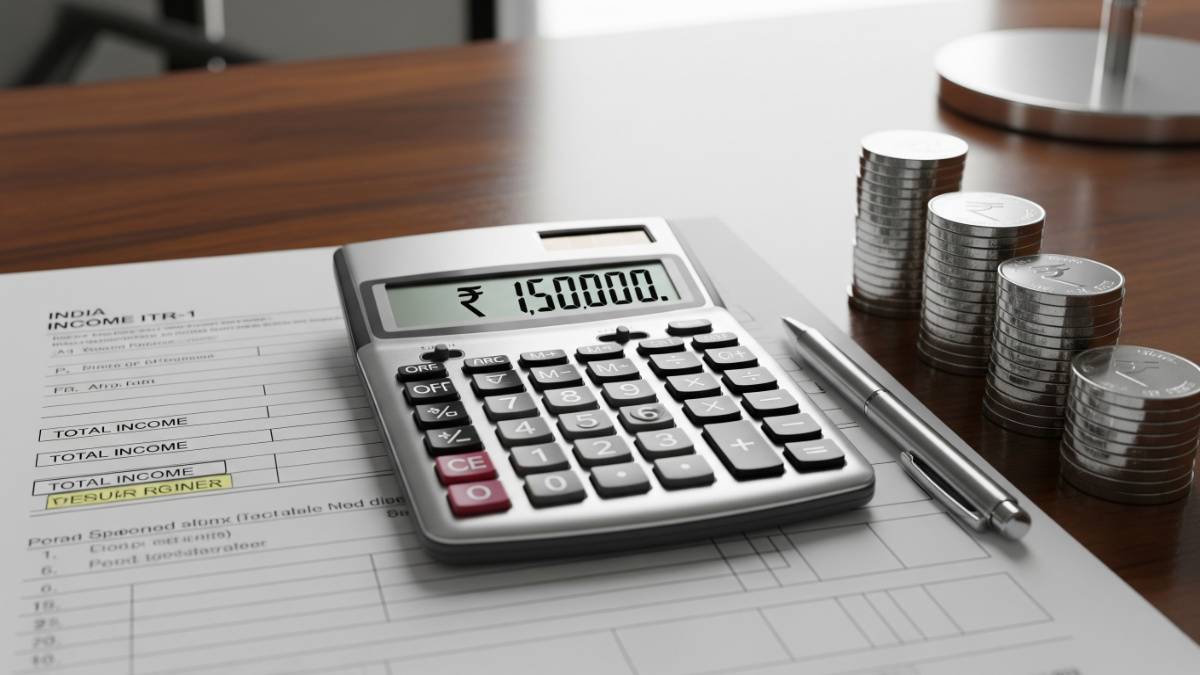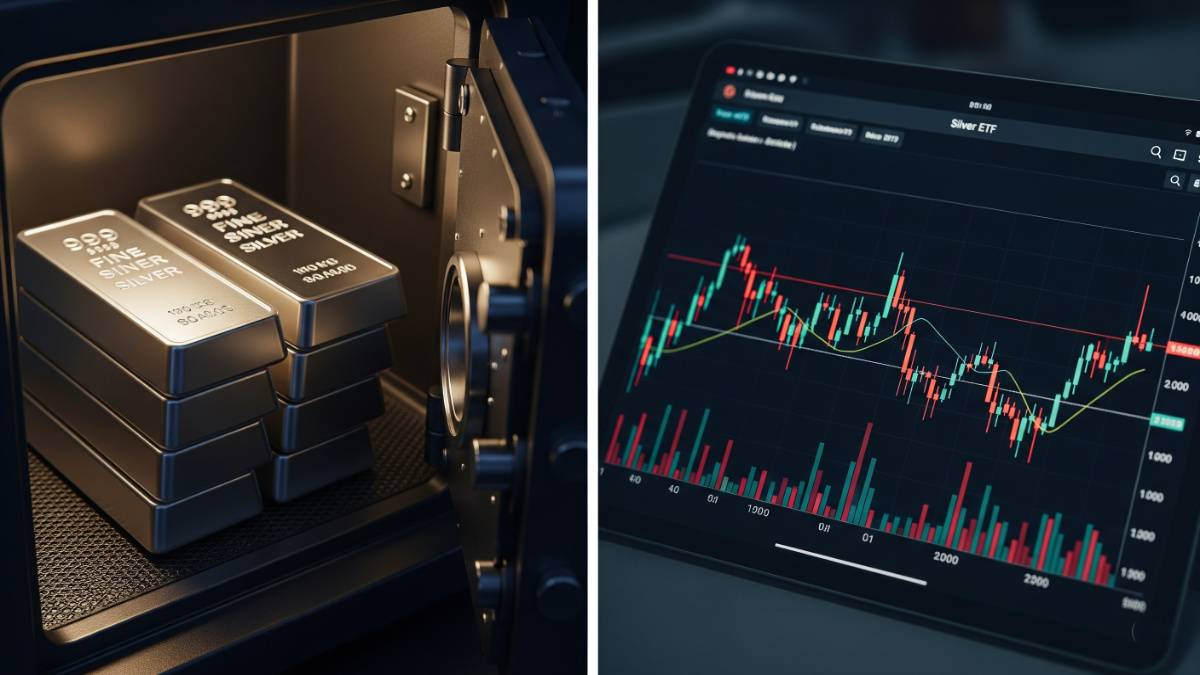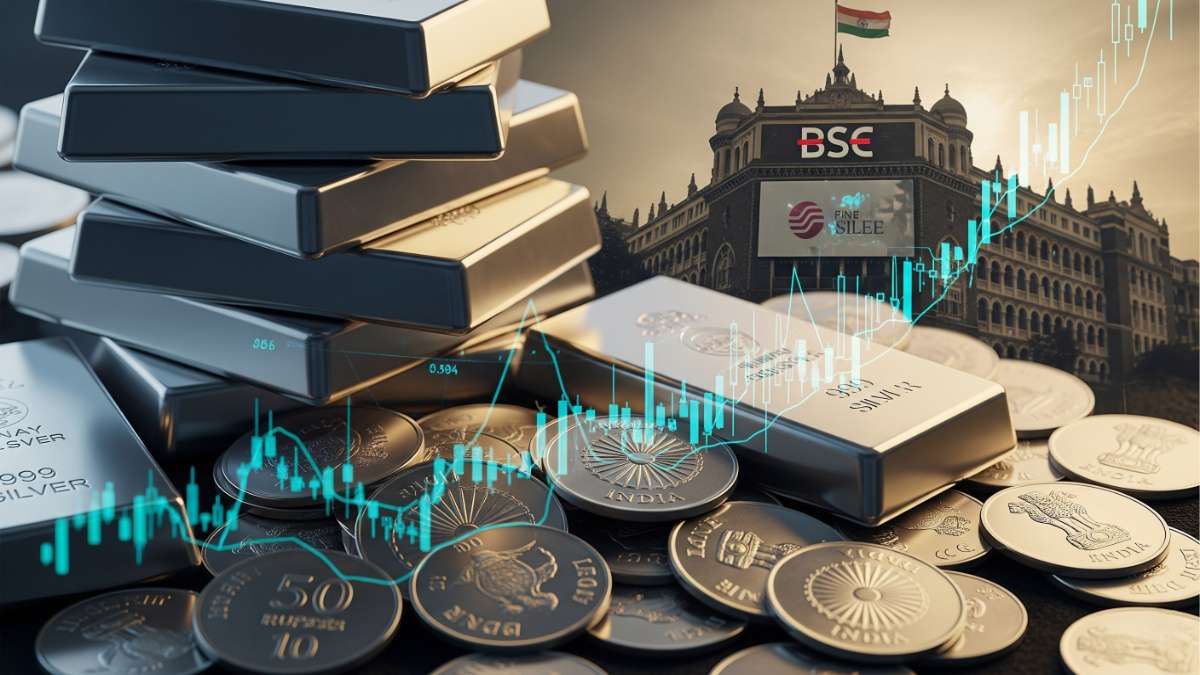Silver Exchange-Traded Funds (ETFs) are investment funds traded on stock exchanges that primarily invest in physical silver bullion of at least 99% purity, stored in secure vaults. They offer a convenient way for investors to gain exposure to the silver market without the complexities of physically holding the metal. In the Indian market, silver ETFs have emerged as an accessible and efficient method for investors seeking to diversify their portfolios with precious metals.
The operation of silver ETFs is centered around a structure that allows shares of the fund to be bought and sold like stocks throughout the trading day. The value of these shares fluctuates based on the price of silver, making them an attractive option for those who want to capitalize on the potential appreciation of silver. Each share of a silver ETF typically corresponds to a specific quantity of silver, enabling investors to indirectly own the metal without dealing with storage or security issues.
For newcomers to investing, silver ETFs represent a viable avenue to enter the commodities market. They provide the dual advantage of liquidity and diversification, as they can be easily bought and sold on major stock exchanges, including the National Stock Exchange (NSE) and the Bombay Stock Exchange (BSE) in India. Moreover, investing in silver ETFs can help mitigate risks associated with market volatility, as silver often behaves differently from traditional equity assets, serving as a valuable hedge during economic downturns or inflationary periods.
Overall, Silver ETFs in India are a compelling choice for investors who wish to include precious metals in their investment strategy while leveraging the operational benefits of modern trading platforms. As the demand for silver continues to grow, understanding the mechanics and advantages of silver ETFs becomes essential for those looking to enhance their investment portfolio.
Step-by-Step Guide to Investing in Silver ETFs
Investing in silver ETFs can be a rewarding opportunity, especially for beginners who are looking to diversify their portfolios. The process is straightforward and can be accomplished in a few simple steps. This guide will help you navigate through the necessary stages to acquire your first silver ETF investment in India.
Firstly, you must set up a trading account with a registered stockbroker. Choose a broker that offers a robust trading platform, low fees, and excellent customer service. Most brokers now offer online account opening procedures, making it convenient for users. Once you have submitted the required documents and completed the verification process, you can fund your trading account, enabling you to make investments in silver ETFs.
The next step involves researching the available silver ETFs. In India, several options may be available, each varying in terms of management fees, liquidity, and historical performance. It is crucial to compare these elements to find an ETF that aligns with your investment goals. You can utilize financial news websites, broker platforms, and analytical tools to evaluate silver ETFs. Pay close attention to how the ETF tracks the price of silver, along with any additional features such as physical silver holdings.
Once you have narrowed down your choices, it’s time to execute your purchase. Access your broker’s trading interface and search for the silver ETF by its symbol. You can place either a market order, which buys at the current market price, or a limit order, which buys only when the price meets your predetermined level. Before confirming your order, double-check all details to ensure accuracy.
After completing your transaction, monitor your silver ETF investment periodically. Staying informed about market trends and silver price fluctuations can enhance your investment strategy. Following these steps will empower you to invest confidently in silver ETFs in India, paving the way for potential financial growth.
Best Silver ETFs to Buy in India for 2025

With growing interest in precious metals, silver ETFs are an attractive option for Indian investors in 2025. Choosing the right ETF requires evaluating performance history, expense ratios, and market trends. Here are key considerations and examples of silver ETFs to explore.
Performance history reflects how closely an ETF tracks silver prices and its returns over time. For instance, the ICICI Prudential Silver ETF (AUM ~₹6,762 Cr as of July 2025) has consistently tracked domestic silver prices with low tracking error, making it a stable choice for conservative investors. Similarly, the Nippon India Silver ETF (expense ratio ~0.56%) offers competitive returns, benefiting from high liquidity on the NSE.
Expense ratios are critical, as lower fees boost long-term returns. Look for ETFs with expense ratios below 0.6%, such as the Aditya Birla Sun Life Silver ETF, which balances cost and performance. Comparing fees across funds on platforms like Moneycontrol or AMFI can guide your decision.
Market sentiment also plays a role. Silver’s demand is rising due to its use in India’s solar energy sector, projected to grow under the National Solar Mission. ETFs that hold physical silver, like the ones mentioned, benefit from this trend. Monitor global silver prices and industrial demand through sources like the World Silver Survey to time your investments.
Consider ETFs like ICICI Prudential or Nippon India for their strong track record and liquidity. Always review fund fact sheets and consult a financial advisor to align your choice with your risk tolerance and goals.
Read : List of Silver ETFs in India
Pros and Cons of Investing in Silver ETFs in India
Investing in Silver Exchange Traded Funds in India presents both opportunities and challenges which potential investors need to carefully weigh. One of the most significant advantages of investing in silver ETFs is their high liquidity. Unlike physical silver, which requires storage and safety considerations, silver ETFs can be bought and sold on stock exchanges easily, allowing for quick entry and exit from the market. This characteristic appeals particularly to investors who appreciate the flexibility to react promptly to market conditions.
Furthermore, silver ETFs provide an affordable and accessible means for new investors to gain exposure to the silver market. They often have lower investment minimums compared to purchasing physical silver, making them an attractive option for those who wish to diversify their portfolios without incurring high costs. Additionally, investing in silver ETFs can offer exposure to silver prices without the complications of buying, storing, and insuring the physical metal, thus reducing the related responsibilities and risks.
However, potential investors must also acknowledge the risks associated with silver ETFs. Market volatility can lead to significant price fluctuations, especially during periods of economic uncertainty. The value of silver ETFs can be influenced by various factors such as market demand, geopolitical tensions, and shifts in investor sentiment towards precious metals. As a result, it is essential for investors to stay informed about market trends and perform regular portfolio assessments.
Another consideration is the expense ratio charged by the fund management, which can erode investment returns over time. While generally lower than many mutual funds, these fees still merit attention as part of the overall investment strategy. In conclusion, investing in silver ETFs requires a balanced understanding of both the advantages and potential drawbacks to make informed decisions that align with individual financial goals.
Taxation Rules for Silver ETFs in India

Investing in silver ETFs in India offers a practical way to diversify your portfolio, but understanding the tax implications is key to making informed decisions. Silver ETFs are subject to capital gains tax, categorized as short-term capital gains (STCG) or long-term capital gains (LTCG), depending on the holding period.
If you sell your silver ETF within 12 months, any profit is treated as a short-term capital gain and taxed at a flat rate of 20%, as per the Finance Act 2024 changes effective from July 23, 2024. For example, if you earn a ₹50,000 profit on a silver ETF sold after 10 months, your tax liability would be ₹10,000.
For investments held for more than 12 months, profits are classified as long-term capital gains. As of August 2025, following the Finance Act 2024, LTCG on silver ETFs is taxed at a flat rate of 12.5% without the benefit of indexation. For instance, if you sell a silver ETF after four years for a ₹1,00,000 profit, your tax liability would be ₹12,500. This change simplifies tax calculations but removes the inflation adjustment previously available.
To optimize your silver ETF investments, keep detailed records of purchase dates, prices, and transaction costs. Consulting a tax professional can help you navigate these rules and align your strategy with India’s tax framework.
Read : Top 6 Silver ETFs with Lowest Expense Ratio
Is Silver ETF Better Than Physical Silver in India?

Investing in silver has long been considered a viable strategy for wealth preservation and growth. Nevertheless, as investment vehicles have evolved, the choice between traditional physical silver and modern Silver Exchange-Traded Funds (ETFs) has become increasingly significant. In the Indian context, there are several factors that tilt the balance in favor of silver ETFs over physical silver ownership.
One of the primary advantages of investing in silver ETFs is convenience. When purchasing physical silver, investors must consider not only the buying process but also aspects such as transportation, security, and storage. Silver bullion and coins require secure storage to prevent theft or damage, resulting in additional logistical challenges. In contrast, silver ETFs are held electronically, eliminating storage concerns, making it accessible through a brokerage account, and allowing for easy buying and selling during market hours.
Additionally, storage costs for physical silver can add up over time. Investors must ensure their physical assets are stored safely, which may involve safe deposit boxes or home safes. These costs can erode the potential gains from the investment. On the other hand, silver ETFs incur lower management fees and do not present any physical storage challenges, resulting in a more cost-effective investment model.
Liquidity is another significant factor favoring silver ETFs. The ease with which silver ETFs can be traded on stock exchanges offers immediate access to funds, something that cannot be achieved with physical silver without significant delays. Investors can quickly respond to market fluctuations, making adjustments to their portfolios as needed without the cumbersome process of buying or selling physical assets.
Ultimately, while both silver ETFs and physical silver have their distinct advantages, ETFs appear to offer a more convenient and efficient means of investing, particularly in a growing market like India. As investors weigh their options, they should consider these factors to make an informed decision that aligns with their individual investment strategy.
Risks of Investing in Silver ETFs in India
Investing in silver Exchange-Traded Funds (ETFs) in India presents an opportunity for portfolio diversification and potential returns; however, it is pertinent to be aware of the associated risks. One of the primary risks involves market volatility. The price of silver can experience significant fluctuations due to various factors, including economic conditions, demand and supply dynamics, and geopolitical events. Such volatility can lead to unpredictable investment outcomes, and it is essential for investors to assess their risk tolerance before allocating their capital into silver ETFs.
Currency fluctuations pose another risk for investors in silver ETFs. Since silver is typically priced in U.S. dollars, any changes in the exchange rate between the Indian Rupee and the dollar can affect the value of investments made in silver. A depreciation of the Rupee against the dollar can result in increased costs and lowered returns, emphasizing the importance of monitoring currency trends alongside silver market trends. Therefore, investors should consider currency risk when planning their investment strategies, particularly in international markets like that of silver.
Regulatory changes further add a layer of risk to investing in silver ETFs in India. The regulatory environment can evolve, impacting tax policies, import duties on precious metals, and trading rules. Any modifications in regulatory frameworks could have unintended consequences on the performance of silver ETFs, potentially affecting an investor’s return on investment. Staying informed about the prevailing regulations and potential changes is crucial for investors to navigate these risks effectively.
In light of these factors, individuals contemplating investments in silver ETFs must conduct thorough research and consider employing risk mitigation strategies. Such strategies may include diversification across various asset classes and consistent monitoring of market conditions, which can help in making informed investment decisions.
Understanding the Functionality of Silver ETFs in India
Silver Exchange-Traded Funds (ETFs) serve as an innovative investment vehicle that directly tracks the price of silver, providing investors with an accessible method to gain exposure to this precious metal without necessitating physical ownership. Each unit of a silver ETF typically represents a specific quantity of silver, allowing investors to easily buy and sell shares on the stock exchange much like traditional stocks.
The operational dynamics of silver ETFs in India begin with their structure, which is mandated by the Securities and Exchange Board of India (SEBI). SEBI regulates these funds to ensure transparency, liquidity, and investor protection. A silver ETF comprises a portfolio of physical silver, which is usually held in secured vaults, thereby ensuring that the fund’s value is closely aligned with the prevailing market rates for silver. When the price of silver fluctuates, the net asset value (NAV) of the ETF is adjusted accordingly, reflecting real-time changes in the silver market.
Investors can trade silver ETFs on various stock exchanges in India, such as the National Stock Exchange (NSE) and the Bombay Stock Exchange (BSE). The trading process usually requires a demat account, through which investors can easily buy or sell units of the silver ETF at market prices. The ability to trade throughout the day, combined with the liquidity offered by these ETFs, makes them a popular choice for both novice and seasoned investors.
Moreover, there are no additional costs typically associated with physical silver holdings, such as storage and insurance, which enhances the attractiveness of investing in a silver ETF. By utilizing this financial instrument, investors can efficiently manage their exposure to silver without the logistical challenges of physical storage. Overall, silver ETFs present a user-friendly alternative for those looking to invest in silver through a regulated and structured platform.
Difference Between Gold ETF and Silver ETF in India
When considering investments in precious metals, two prominent options are Gold ETFs and Silver ETFs. While both serve as avenues for commodity investment, they exhibit distinct characteristics that cater to different investment strategies and objectives. Understanding these differences is essential for investors looking to diversify their portfolios effectively.
The first major difference lies in their market dynamics. Gold has historically been viewed as a safe-haven asset, often gaining value during economic downturns. As such, Gold ETFs tend to be perceived as more stable investments, suitable for risk-averse investors seeking wealth preservation. In contrast, Silver, while also a precious metal, is subject to higher volatility in its price movements. This volatility can be attributed to its dual role in both industrial applications and as an investment commodity. Consequently, Silver ETFs can demonstrate significant price fluctuations based on supply and demand dynamics in various sectors, such as electronics and solar energy.
Another key difference is in their liquidity. Gold is more widely traded globally, making Gold ETFs highly liquid. This liquidity facilitates quick transactions and price execution, appealing to active traders and investors. Silver ETFs, while gaining popularity, may not have the same level of liquidity. Therefore, investors should consider their own trading preferences and the urgency of transactions when choosing between these two ETFs.
Moreover, the cost of investing in these ETFs varies. Generally, Gold ETFs have higher associated costs due to the higher price of gold itself, compared to silver. This difference can influence the decision-making process for investors, particularly those who are budget-conscious or looking to allocate funds toward long-term investments.
Ultimately, the choice between investing in Gold ETFs and Silver ETFs hinges on personal financial goals, risk appetite, and market outlook. Balancing investments in both could provide a comprehensive strategy, allowing investors to leverage the unique advantages each precious metal offers.
Read : Why Gold ETFs Are the Hottest Investment in 2025
Why Invest in Silver ETFs in India?

Investing in silver ETFs in India presents a compelling opportunity for both novice and seasoned investors. One of the primary reasons for considering silver ETFs is their ability to hedge against inflation risks. Silver, known as a precious metal, traditionally retains its value during periods of inflation, making it a stable investment choice. When the purchasing power of currency declines, the value of silver often increases, providing a buffer against economic uncertainty.
Moreover, there is a growing demand for silver across various industries, particularly in technology and solar energy sectors. With innovations and advancements being made in electronics and renewable energy technology, the industrial usage of silver is expected to rise significantly. This industrial demand not only fuels its price but also enhances the overall investment potential of silver ETFs. Investors looking to diversify their portfolios should certainly consider how the shifting dynamics in the industrial landscape influence silver prices.
Another factor to consider is silver’s role as a wealth preservation asset. In times of geopolitical tension or economic downturn, many investors turn to tangible assets such as silver to preserve their wealth. The liquidity of silver ETFs makes them particularly attractive, as they can be bought and sold easily on stock exchanges, providing an efficient means to enter or exit positions. This ease of trading, combined with the intrinsic value of silver, positions ETFs as a convenient and low-cost alternative to physical silver investment.
In essence, investing in silver ETFs in India not only protects against inflation but also capitalizes on industrial demand growth. Their role as a reliable wealth-preserving asset further solidifies their place in a diversified investment strategy. Thus, they should be regarded as a viable option for individuals seeking to enhance their investment portfolio.
The Bottom Line on Silver ETFs in India
Silver ETFs in India offer a smart, convenient, and cost-effective way to gain exposure to silver without the hassles of storage or security. With increasing industrial demand, a role as an inflation hedge, and the liquidity of stock market trading, they fit well into a diversified portfolio.
However, like any investment, they carry risks—market volatility, currency fluctuations, and management costs can impact returns. The key is to invest with clear goals, choose ETFs with low expense ratios, and stay updated on silver market trends. For those who understand these dynamics, Silver ETFs can be a valuable long-term addition to an investment strategy.
Disclaimer : This article is for informational purposes only and does not constitute financial, investment, or tax advice. Investments in Silver ETFs are subject to market risks, including price fluctuations and changes in regulations. Past performance is not indicative of future results. Always conduct your own research or consult a certified financial advisor before making investment decisions.


